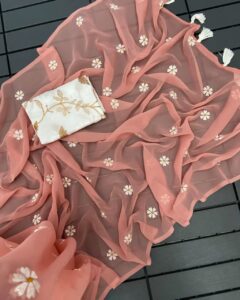
Embarking on the journey of starting a new fabric business can be both exciting and rewarding, especially for those passionate about textiles and design. With the increasing demand for unique fabrics in fashion, interior design, and crafting, there’s a significant opportunity for success. This comprehensive guide will walk you through the essential steps to start your new fabric business, from initial planning to launching and growing your enterprise.
Step 1: Research and Planning for Fabric Business
Market Research
Before diving into the fabric industry, conduct thorough market research to understand the current landscape. Identify your target audience, analyze competitors, and recognize ongoing trends. Key areas to explore include:
- Customer Needs: Determine which types of fabrics are in high demand, such as sustainable materials or luxury textiles.
- Competitor Analysis: Study existing fabric businesses to identify market gaps you can fill.
- Market Trends: Stay updated on industry trends, such as eco-friendly fabrics and digital printing techniques.
Business Plan
A well-structured business plan is essential for your new fabric business. It serves as a roadmap for your operations and helps secure funding if needed. Your business plan should include:
- Executive Summary: An overview of your business, including your mission and vision.
- Market Analysis: Insights from your market research.
- Products and Services: Details about the types of fabrics you will offer.
- Marketing Strategy: Plans to attract and retain customers.
- Financial Projections: Expected costs, revenue, and profitability.
Step 2: Sourcing and Inventory for Fabric Business
Suppliers
Establish relationships with reliable fabric suppliers. Look for those who offer high-quality materials at competitive prices. Attend trade shows, visit textile markets, and connect with manufacturers to find the best sources.
Inventory Management
Effective inventory management ensures you have the right fabrics in stock without overstocking. Invest in inventory management software to keep track of stock levels, orders, and deliveries. Consider starting with a diverse but manageable inventory that includes popular fabric types like cotton, silk, linen, and synthetic blends.
Step 3: Setting Up Your Fabric Business
Legal Structure
Choose a legal structure for your new fabric business, such as a sole proprietorship, partnership, or limited liability company (LLC). Register your business with the appropriate government authorities and obtain any necessary licenses and permits.
Location
Decide whether you will operate from a physical storefront, an online store, or both. A physical store allows customers to feel and see the fabrics, while an online store can reach a broader audience. If you choose a physical location, ensure it is easily accessible and has sufficient space for displaying fabrics and storing inventory.
Branding
Develop a strong brand identity that reflects your business values and appeals to your target market. This includes creating a memorable logo, choosing a color scheme, and crafting a unique selling proposition (USP). Ensure your branding is consistent across all marketing materials and platforms.
Step 4: Marketing and Sales for Fabric Business
Online Presence
Establish a robust online presence through a professional website and active social media accounts. Your website should feature:
- Product Listings: High-quality images and detailed descriptions of your fabrics.
- E-commerce Functionality: An easy-to-use online store with secure payment options.
- Blog: Informative content about fabrics, sewing tips, and industry trends to attract and engage visitors.
Social Media Marketing
Leverage social media platforms to promote your fabrics and connect with potential customers. Share engaging content, such as fabric swatches, customer projects, and behind-the-scenes looks at your business. Run targeted ads to reach specific demographics.
Networking and Partnerships
Network with industry professionals, such as fashion designers, interior decorators, and craft enthusiasts. Attend trade shows, craft fairs, and fashion events to showcase your fabrics and build relationships. Partner with local businesses and influencers to expand your reach.
Customer Service
Excellent customer service can set your new fabric business apart. Provide personalized assistance, respond promptly to inquiries, and handle returns and exchanges smoothly. Consider offering fabric samples to help customers make informed decisions.
Step 5: Financial Management
Budgeting
Create a detailed budget that outlines your startup costs, ongoing expenses, and revenue projections. Monitor your finances regularly to ensure you stay on track and make adjustments as needed.
Pricing Strategy
Develop a pricing strategy that covers your costs while remaining competitive. Consider factors such as fabric quality, market demand, and competitor pricing. Offer discounts for bulk purchases or loyal customers to encourage repeat business.
Funding
If you need funding to start your fabric business, explore various options such as personal savings, bank loans, or investors. Prepare a compelling pitch that highlights your business plan, market research, and financial projections.
Step 6: Launch and Grow Your Business
Soft Launch
Consider a soft launch to test your operations and gather feedback before your official launch. Invite friends, family, and select customers to visit your store or website and provide feedback.
Grand Opening
Plan a grand opening event to attract attention and generate buzz. Offer promotions, giveaways, and special discounts to entice customers. Use social media and local advertising to promote your grand opening.
Continuous Improvement
Continuously assess and improve your business operations. Stay updated on industry trends, listen to customer feedback, and adapt to changing market conditions. Explore new product lines, expand your inventory, and seek opportunities for growth.
Conclusion
Starting a new fabric business requires careful planning, dedication, and a passion for textiles. By following this comprehensive guide, you can build a successful fabric business that meets customer needs and stands out in a competitive market. Whether you’re opening a physical store, an online shop, or both, your journey in the fabric industry can be both fulfilling and profitable. If you are looking for a trusted fabric supplier, Indian Textile House is your trusted supplier.













